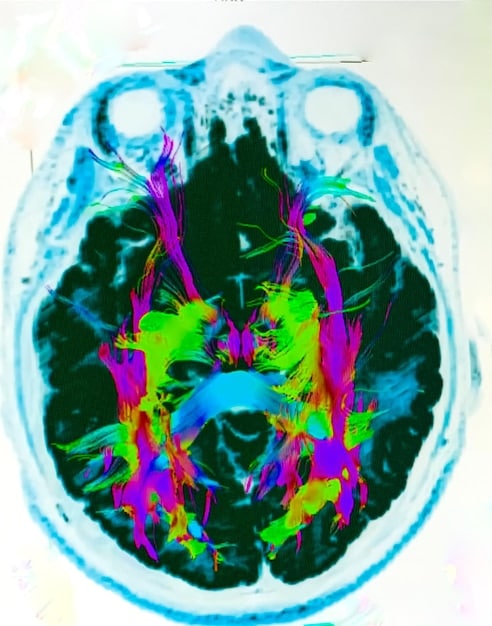Manage Chronic Pain: Mindfulness Meditation for Pain Relief

Mindfulness meditation offers a powerful, non-pharmacological approach to manage chronic pain by helping individuals change their relationship with pain sensations, reducing suffering and improving overall quality of life.
Discover how mindfulness meditation can be a practical and effective tool for pain relief, helping you manage chronic pain and improve your overall well-being.
Understanding Chronic Pain and Its Impact
Chronic pain is more than just a physical sensation; it’s a persistent and often debilitating condition that can significantly impact a person’s quality of life. Understanding the complexities of chronic pain is the first step toward finding effective management strategies.
The Nature of Chronic Pain
Chronic pain differs from acute pain in its duration and underlying mechanisms. While acute pain serves as a warning signal for injury or illness, chronic pain persists long after the initial cause has resolved, often lasting for months or even years.
The Psychological Impact of Chronic Pain
Living with chronic pain can take a toll on mental and emotional well-being. It can lead to feelings of frustration, anxiety, depression, and hopelessness, further exacerbating the experience of pain.

Here are some important factors to consider regarding the influence of chronic pain:
- Chronic pain can significantly impair daily functioning, making it difficult to work, socialize, and engage in activities that bring joy.
- The constant presence of pain can lead to sleep disturbances, fatigue, and decreased energy levels.
- Chronic pain can strain relationships with family and friends, leading to feelings of isolation and loneliness.
Understanding the multifaceted impact of chronic pain is crucial for developing holistic and personalized treatment plans that address both the physical and psychological aspects of the condition. By recognizing the challenges posed by chronic pain, individuals can take proactive steps to improve their well-being and regain control over their lives.
The Science Behind Mindfulness Meditation and Pain Relief
Mindfulness meditation is not just a relaxation technique; it’s a scientifically supported practice that can alter how the brain processes pain signals, providing genuine relief. Exploring the science behind mindfulness meditation can help you understand its potential for managing chronic pain.
How Mindfulness Affects the Brain
Mindfulness meditation involves focusing attention on the present moment without judgment. This practice can lead to structural and functional changes in the brain, particularly in areas associated with attention, emotional regulation, and pain perception.
The Pain Gate Theory and Mindfulness
The pain gate theory suggests that the perception of pain is influenced by a complex interplay of factors, including sensory input, emotional state, and cognitive appraisal. Mindfulness meditation can help close the “pain gate” by promoting relaxation, reducing anxiety, and shifting attention away from pain sensations.

Studies have shown that mindfulness meditation can lead to the following:
- Reduced activation in brain regions associated with pain processing, such as the anterior cingulate cortex and the insula.
- Increased activity in brain regions associated with emotional regulation and cognitive control, such as the prefrontal cortex.
- Improved connectivity between different brain regions, enhancing the ability to regulate emotions and cope with stress.
By understanding the scientific basis of mindfulness meditation, individuals can approach this practice with greater confidence and motivation, knowing that it has the potential to bring about real and lasting changes in their experience of chronic pain. The science is clear: mindfulness is not merely a placebo, but a powerful tool for pain management.
Getting Started with Mindfulness Meditation: A Step-by-Step Guide
Beginning your mindfulness meditation journey doesn’t require special equipment or advanced training. With a few simple steps, you can start practicing mindfulness and experiencing its benefits for pain relief.
Finding a Quiet Space and Comfortable Posture
Choose a quiet and comfortable place where you can sit or lie down without distractions. Maintain a posture that is both relaxed and alert, whether it’s sitting in a chair with your feet on the ground or lying down with your arms at your sides.
Focusing on Your Breath
Bring your attention to your breath, noticing the sensation of each inhale and exhale. You can focus on the rise and fall of your abdomen or the feeling of air passing through your nostrils. When your mind wanders, gently redirect your attention back to your breath.
Guided Meditation Resources
There are several resources available to support your mindfulness meditation practice, including apps, online videos, and in-person classes.
- Guided meditation apps such as Headspace and Calm offer structured programs and guided meditations for beginners.
- YouTube channels and websites often provide free guided meditations led by experienced instructors.
- Local mindfulness centers and yoga studios may offer in-person classes and workshops on mindfulness meditation.
Starting with short sessions of 5-10 minutes and gradually increasing the duration as you become more comfortable is best. Consistency is key, so try to practice mindfulness meditation daily, even if it’s just for a few minutes. Experiment with different techniques and resources to find what works best for you. Remember, mindfulness is a skill that develops with practice, so be patient with yourself and celebrate your progress along the way.
Incorporating Mindfulness into Daily Life for Pain Management
Mindfulness is not just a practice reserved for formal meditation sessions; it can be integrated into everyday activities to help manage chronic pain. By cultivating mindfulness in daily life, you can develop a greater awareness of your thoughts, feelings, and sensations, reducing the impact of pain on your overall well-being.
Mindful Movement
Engage in activities such as walking, yoga, or tai chi with a focus on the present moment. Pay attention to the sensations in your body as you move, noticing the feeling of your feet on the ground, the stretch in your muscles, and the rhythm of your breath.
Mindful Eating
Savor each bite of food with intention, noticing the flavors, textures, and aromas. Avoid distractions such as phones or television, and focus on the experience of eating. This practice can help reduce overeating and promote a healthier relationship with food.
Dealing with Painful Moments Mindfully
When you experience pain, observe the sensations without judgment. Notice the location, intensity, and quality of the pain, as well as any thoughts or emotions that arise. Avoid resisting or struggling with the pain, and instead, allow yourself to feel it without getting carried away by it.
Here are some tips for cultivating mindfulness in your daily life:
- Set an alarm as a reminder to pause and practice mindfulness throughout the day.
- Use everyday activities such as brushing your teeth or washing dishes as opportunities to practice mindfulness.
- Be patient with yourself and remember that mindfulness is a skill that develops with practice.
By incorporating mindfulness into your daily life, you can transform your relationship with pain, reducing its impact on your emotional and physical well-being. This approach empowers you to live more fully and presently, even in the presence of chronic pain.
Overcoming Challenges and Maintaining a Consistent Practice
Sustaining a mindfulness practice, especially when managing chronic pain, comes with unique challenges. Knowing how to navigate these obstacles can help you maintain consistency and reap the long-term benefits of mindfulness.
Dealing with Mind Wandering
It’s natural for the mind to wander during meditation. When you notice your attention drifting, gently redirect it back to your breath or chosen focus without judgment. Consider using a mantra or visualization to anchor your attention.
Managing Frustration and Impatience
Mindfulness is not a quick fix, and it may take time to experience noticeable pain relief. Be patient with yourself, and remember that progress is not always linear. Celebrate small victories and focus on the process rather than the outcome.
Resources and Support Systems
Find support from friends, family members, or a therapist. Joining a mindfulness meditation group can provide valuable community and encouragement.
Remember these strategies for maintaining your mindfulness practice:
- Set realistic goals and break down your practice into manageable steps.
- Find a meditation buddy or join a support group for accountability and encouragement.
- Be kind to yourself and accept that some days will be easier than others.
Overcoming challenges is a part of the mindfulness journey. By acknowledging difficulties and employing effective coping strategies, you can fortify your practice and harness the full potential of mindfulness for chronic pain management.
Advanced Techniques and Further Exploration
As you become more comfortable with basic mindfulness meditation, you may want to explore advanced techniques to deepen your practice and enhance its benefits for chronic pain management.
Loving-Kindness Meditation (Metta)
Cultivate feelings of love, compassion, and kindness towards yourself and others. This practice can help reduce self-criticism, promote emotional well-being, and foster a sense of connection with others.
Body Scan Meditation
Systematically scan your body, noticing sensations of tension, pain, or discomfort. This practice can help increase body awareness, release tension, and develop a greater sense of embodiment. This can be particularly effective for understanding where pain is truly derived from, and how the mind is affecting it.
Integrating Mindfulness into Challenging Situations
Apply mindfulness techniques to cope with specific triggers or stressors. For example, you might use mindfulness to manage anxiety during a doctor’s appointment or to cope with pain flares during physical activity.
These advanced practices can help expand your mindfulness skill set:
- Attend advanced mindfulness retreats or workshops.
- Read books and articles by experienced mindfulness teachers.
- Work with a qualified mindfulness-based therapist or coach.
By exploring advanced mindfulness techniques, you can deepen your understanding of yourself, cultivate greater resilience, and unlock new possibilities for managing chronic pain. Mindfulness is a journey, not a destination, and there’s always more to discover.
| Key Concept | Brief Description |
|---|---|
| 🧘 Mindfulness Meditation | Focus on the present without judgment, reducing pain perception. |
| 🧠 Brain Changes | Mindfulness can alter brain function, decreasing pain signals. |
| 😌 Daily Integration | Incorporate mindfulness in daily activities for continuous pain management. |
| 🤝 Support Systems | Seek support from groups or therapists for consistent practice. |
Pain Relief with Mindfulness FAQ
▼
Mindfulness meditation involves focusing your attention on the present moment, observing your thoughts, feelings, and sensations without judgment. It encourages a non-reactive awareness of your current state.
▼
Mindfulness meditation can alter how your brain processes pain signals, reducing the emotional and cognitive impact of pain. It helps you change your relationship with pain, decreasing suffering and improving coping skills.
▼
Aim for daily practice, even if it’s just for a few minutes. Consistency is key to experiencing the benefits of mindfulness meditation. Start with shorter sessions and gradually increase the duration as you become more comfortable.
▼
It’s completely normal for your mind to wander. When you notice this, gently redirect your attention back to your breath or chosen focus without judgment. This redirection is a core part of the practice.
▼
Mindfulness meditation is generally safe, but it’s essential to listen to your body and practice with self-compassion. If you have underlying mental health conditions, consult with a healthcare professional before starting a mindfulness practice.
Conclusion
In conclusion, mindfulness meditation provides a valuable and accessible method for managing chronic pain. By understanding the principles and techniques outlined in this guide, you can begin your journey toward reducing pain and enhancing your overall quality of life. Embrace the practice, remain patient, and celebrate the small victories along the way.





